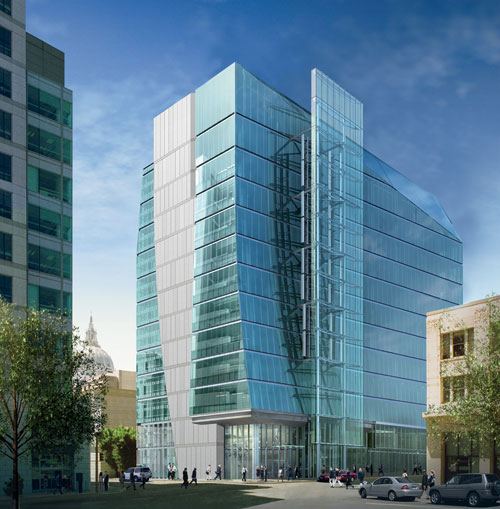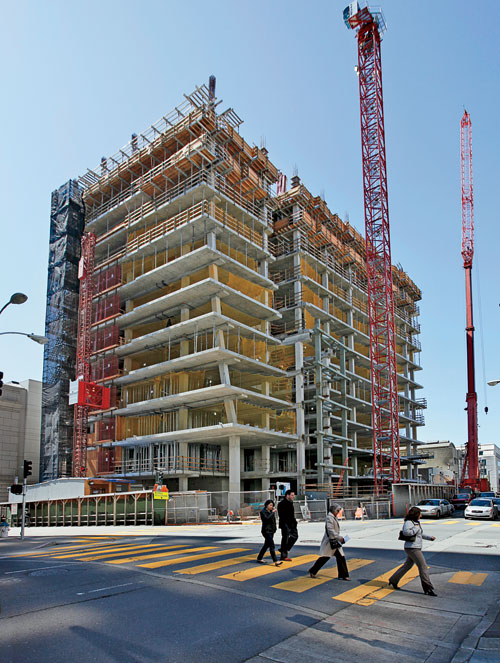Green at Its Core
To achieve these savings, the building deploys a host of tightly coordinated resource conservation and energy production measures that are almost de rigueur on a green office tower. Except for a swath of Sierra white granite that appears to travel over the roof between the east and west facades, the tower is wrapped in double-glazed, high-performance curtain wall. The building has interior and exterior shading devices for controlling glare and minimizing heat gain, light shelves for daylight harvesting, an under-floor air-distribution system, and a 200 kW roof-mounted photovoltaic (PV) array expected to supply about 7 percent of the facility's electricity.
The building also incorporates a few technologies that are still considered a bit exotic. For example, the tower will have a "living machine."
It includes a man-made wetland that will serve as an ornamental feature at the perimeter of the lobby. By mimicking natural processes and relying on plants and other beneficial organisms, the system will cleanse the gray and blackwater generated by the tower, making it suitable for uses such as toilet and urinal flushing. The PUC also hopes to use the reclaimed water for irrigation, but San Francisco does not yet have a permitting process for such systems. According to Mebrahtu, the state and city departments of public health are currently reviewing the relevant regulations.
 |
A set of six to eight vertical axis turbines will be incorporated into a stair tower on the PUC building's north elevation. A bow in the facade will help increase the wind's speed as it travels through the turbines. Image: courtesy Kaplan McLaughlin Diaz |
Â
Another unusual element of 525 Golden Gate is building-integrated wind technology. Six to eight vertical axis turbines, of about 1 kW each, will be mounted on a stair tower on the north facade, taking advantage of a steady wind from the north-northwest. Although they are expected to generate less than 1 percent of the electricity consumed by the building, the PUC will have the option of swapping the turbines out for more efficient ones when the still-nascent building-integrated wind technology improves. In addition, the rotating turbines will serve an important function as a visible source of renewable power, points out Todd Ravenscroft, an associate and project manager in the San Francisco office of Arup, which developed the building's mechanical engineering concept. "You won't be able to see the PVs making energy," he says.
 |
By late March, contractors had completed 11 levels of the building's poured-in-place concrete frame. The structure has no perimeter beams which might obstruct penetration of daylight into the building's interior. Photography: © Michael O'Callahan |









